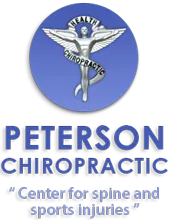Driving fast is not necessarily a good thing. We want to get where we're going as quickly as possible, but we also want to arrive safely. If we drive too fast, we may encounter all sorts of problems. If we drive too slow, we're wasting time and may be causing traffic problems behind us. These competing considerations will both be fulfilled by maintaining an average velocity that is at or close to the posted speed limit. We want to find the "sweet spot," the happy medium that both saves time and helps keep us safe.
The same principles may also be applied when we're exercising. We want to improve, get stronger, and build more endurance as soon as we can, while simultaneously avoiding injury and staying healthy. Very often, these goals may conflict. It's important to ensure that we're exercising efficiently and making certain we're deriving the greatest benefit from our exercise time. These benefits are obtained by a steady approach, one that focuses on incremental gains accomplished over time.1
It's natural to want to arrive at a desired outcome quickly. But as with any other form of training, whether learning to play the piano or becoming a competent chess player, substantial time is required to produce long lasting results. In the case of exercise, trying to hurry the process will usually cause an injury. You'll be set back at least weeks, if not months, and you'll have to start over, pretty much from the beginning.
For almost all of us the "tortoise" approach, rather than that of the "hare" in the well-known fable, will produce the health benefits we're hoping to achieve from our daily exercise. If you've never walked before and want to incorporate this aerobic activity as part of your exercise routine, start with a 10-minute walk. This doesn't sound like much, but that is precisely the point. Start by doing a little and build up gradually and consistently. Within 6 or 8 weeks you'll be doing 30-40 minute brisk walks several times a week, which will represent a very good aerobic exercise program. Incorporating strength training into your routine will employ a similar method. For each of your exercises (such as bench press, one-arm row, squat, toe raise, shoulder press, biceps curl, and lying triceps press), begin with a weight with which you can comfortably do 10 repetitions. If you can't do 10 reps, the weight is too heavy. Start with that weight and do 3 sets per exercise. Build up gradually by increasing the weight by 5%, if possible, each week or every 2 weeks. After 10 to 12 weeks you'll be noticeably stronger and your metabolism will begin to be more efficient.2,3
By progressing slowly and steadily, you will build a solid base and make consistent and possibly substantial gains in your exercise routine. You will get where you want to get safely and effectively. The long-term outcome will be enhanced health, wellness, and well-being.
1Marongiu E, Crisafulli A: Cardioprotection acquired through exercise: the role of ischemic preconditioning. Curr Cardiol Rev 10(4):336-348, 2014
2Huxel Bliven KC, Anderson BE: Core stability training for injury prevention. Sports Health 5(6):514-522, 2013
3Granacher U, et al: The importance of trunk muscle strength for balance, functional performance, and fall prevention in seniors: a systematic review. Sports Med 43(7):627-641, 2013
